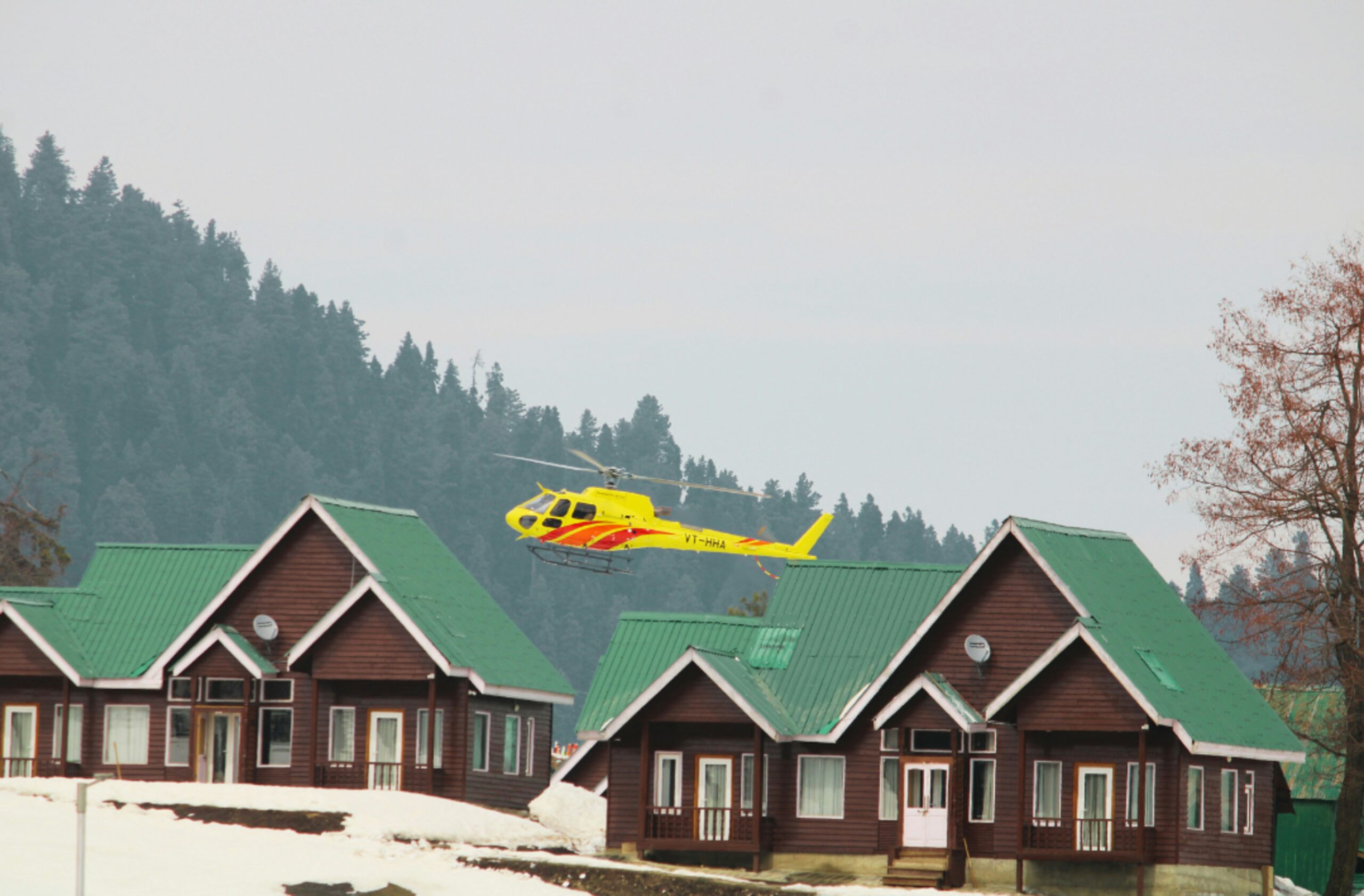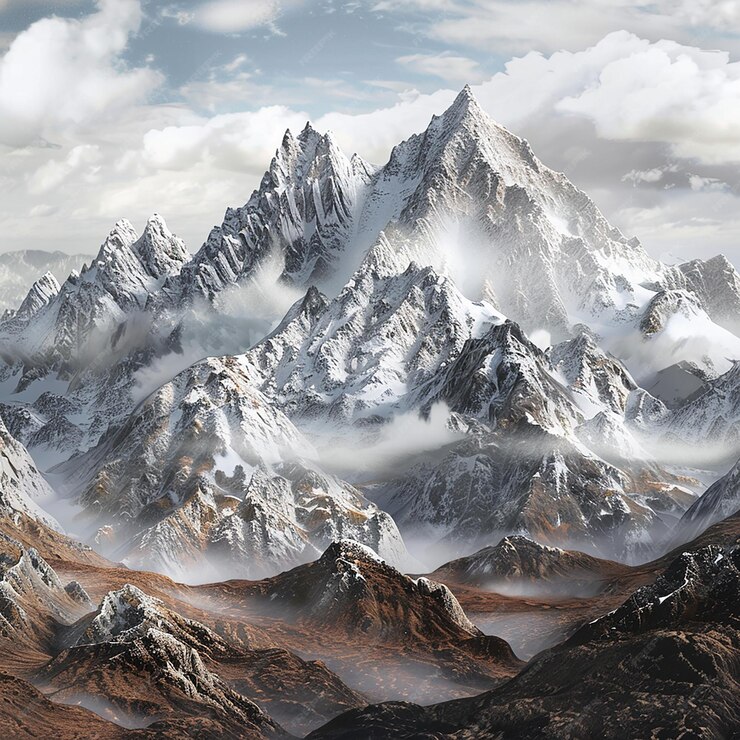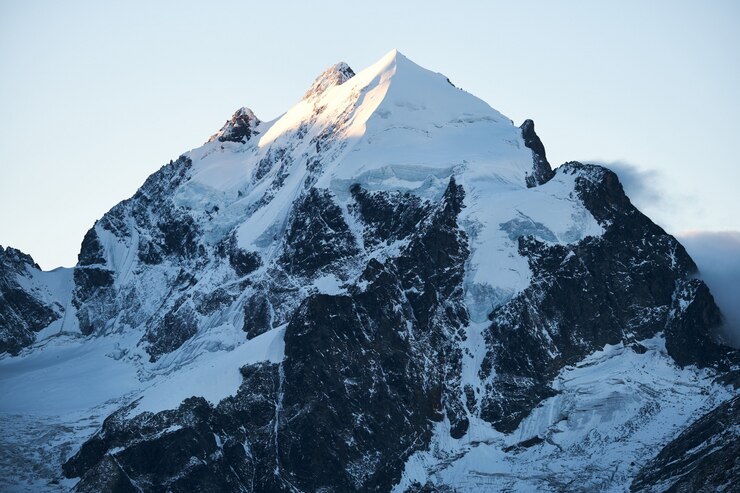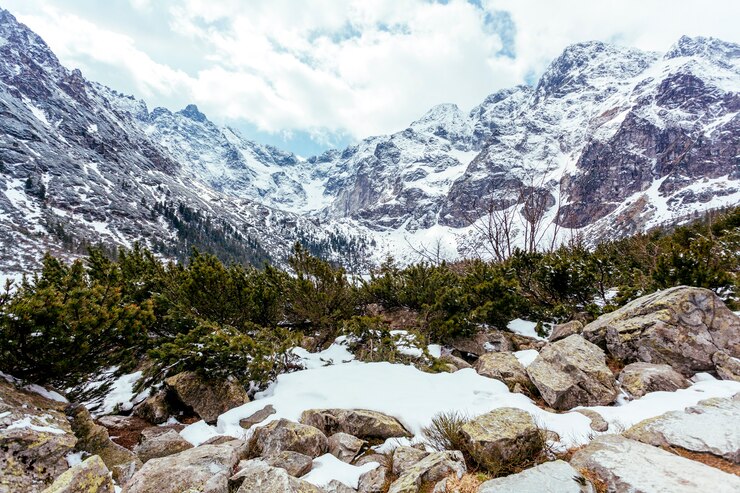Introduction to the World’s Tallest Mountains
Forests, rocks and especially mountains are known to be an interesting object of great importance to explorers, travelers, and scholars. The largeness and magnificent appearance of the world’s tallest mountains has this effect on the people; they compel man to do more. In particular, when we speak about the ‘biggest’ mountains, we are to know what factors became the defining ones. Most often the simplest measurement is height, from sea level to the peak, but other geographical measurements, such as prominence—the height between the top and the lowest circle around it—and isolation—the minimum distance between two peaks of the same height—are also important. Top 5 Tallest Mountains in the World
Some of them are very famous and include the Mount Everest which is the tallest mountain in the whole world and is very demanding owing to the hard climate and lack of oxygen. Other peaks also have their own characters whereby they are characterized not only by the height but also by the level of challenging and risky in the process of climbing. Every mountain climbing is new and challenging in its way due to factors such as weather conditions, steep rocks, snow and technical climbing all of which come with so many challenges to the climbers.
Nevertheless, such steep summits seem to be the purpose of climbing for many people, at the same time, climbing to these areas entails careful preparation, strength and stamina. The climb towards such achievements involves a lot of challenges, thus the achievement of the milestone is even sweeter. From the treacherous vertical ascent of Mount Everest to the lonely stand-alone pinnacles, such as Nanga Parbat, or the towering dominance of K2 over the long valleys, every one of the earth’s tallest mountains has its own narrative of towering natural feature and man’s spirit. Top 5 Tallest Mountains in the World
Here, we will look at the five largest mountains in the world along with information on how best to climb them, their details, past expedition details and most importantly their difficulty levels. Welcome to watch with us as we explore what it takes to know and appreciate these largest mountains that are at the same time the Earth’s apparent summits and some of the Earth’s most fascinating and daunting phenomena.
Mount Everest: The Roof of the World
Mount Everest right at the height of 8,848m (29, 029 ft) is one of the most famous and tallest mountains in the world. In terms of geographical location, the district lies astride the border of Nepal and the Tibet Autonomous Region of China. This imposing mountain is subject to climbers and those seeking adrenalin and adventure thrills from all corners of the world due to its representing challenge and fighting spirit.
The climbing history of Mount Everest has a unique story popularly about Sir Edmund Hillary of New Zealand and Tenzing Norgay of Nepal. They were the first ever to ascend to the summit on May 29,1953; an achievement that which will forever remain indelible in the history of mountaineering. This they achieved, created a pathway for subsequent climbers, and boosted the fame of the mountain to higher highs on the international realm. Top 5 Tallest Mountains in the World
For instance, while the mountain is known as the world’s peak and therefore has a sense of invincibility, its environment is relatively sensitive to any external influence. One of the main problems that developed due to growing tourism and climbing attempts is powerful ecological consequences. Currently the challenge of waste disposal has raised eyebrows; Climbing apparatus and waste products litter the mountain in droves. Several measures have been taken with regard to this problem, such as the obligatory practice of waste collection with climbers.
There exist many routes of climbing on Mount Everest, the most famous of which is the Southeast Ridge starting from Nepal and the Northeast Ridge starting from Tibet. Therefore, each route is different, and the planning has to be done meticulously. To overcome the challenges related to the climb climbers undergo rough terrains and handle unfavorable weather conditions and also come to terms with altitude challenges all in a bid to tackle out the risks involved. Top 5 Tallest Mountains in the World
Perhaps nothing has touched the local economic and cultural life as much as the tourism businesses of the world. Trekking is a core component of tourism in the region and many homers, hotels, restaurants, guiding services and souvenirs shops gain revenue annually from the Everest tourists. Nevertheless, it is an issue that creates such problems as cultural assimilation or integration and demands for infrastructures in small and close-knit societies. The challenges of how to achieve equilibrium between socio-economic gains and social equity and the centrality of social and cultural capital, as well as environmental conservation, continue to be vigorously prosecuted even today by various stakeholders.
K2: The Savage Mountain
K2 also alternately known as Chogori is the second tallest mountain on the planet with a height of 8611 meters (28151 feet) which is located on the two frontiers of two countries, China and Pakistan. It is known by the nickname ‘The Savage Mountain,’ and deservedly so, as it is one of the most technical expedition peaks and one of the deadliest mountains in the world. This mountain is associated with a fatal rate and many mountaineers regard it as one of the hardest to conquer in the world.
Several things make K2 dangerous; It is significantly different from Mount Everest where at least on southern side the ramp is relatively less steep to the top; K2 has no such friendly approach towards climbers. One has to surmount steep and rugged terrains, encounter ice cliffs which may prove fatal, and traditional harsh, unforgiving climate. The technical demands are huge, in fact, no less than physically and technically demanding, rock and ice climbing. Top 5 Tallest Mountains in the World
K2 is known to have one of the most volatile weathers possible. Heavy showers are often characterized by not so long and advance notification, and result in blizzard snowstorms and fatal winds. These are compounded by stranded location of the hotel in the Karakoram Range where even, rescue operations are nearly impossible. Such circumstances make the climbers’ job very risky; the difference between ascending the slopes and a deadly mishap is very slim.
let me begin with the fact that K2 is one of the history’s most successful and most fatal mountains. First successful attempt was by Italian team in 1954 with Ardito Desio as leader and Lino Laced Elli and Achille Compagnoni first to the top. But for each success story, there are ten failure stories. 2008 was a deadly summer as 11 climbers perished in one of the most fatal events in the history of K2. Top 5 Tallest Mountains in the World
Despite all these dangers, K2 remains to be one of the most attractive destinations for climbers from all over the world. A visually imposing and rather isolated peak, the combination of the difficulty of the climb and the fame of achieving it places highly trained and experienced mountaineers capable of risking their lives for a drop of a chance to get to the top. These constant attempts of mitigating one of the biggest challenges on Earth make sure that K2 will always be a symbol of human endeavor.
Kangchenjunga: The Five Treasures of the Snow
An equally colossal mountain is the third tallest one in the world, Kangchenjunga which is the height of 8,586 meters or 28,169 feet. Situated on the border between Nepal and the Indian state of Sikkim, this one has always been treated as a physical endowment, as well as a cultural asset, by the locals. Moreover, the name Kangchenjunga is a Tibetan familiar term meaning the great snow that comes from ‘The Five Treasures of the Snow.’ There are five high peaks in the mountain king which stands for the five repositories of God, the precious metals of gold, silver, gems, grains, plus the holy religious scriptures. Top 5 Tallest Mountains in the World
Culturally, to the existing communities found around the territory of Kangchenjunga, the mountain holds a very positive cultural connotation. To the Sikkimese people, as to many other primitive tribes, the mountain is a deity, and they are sure that the treasures there have never been spoiled by man. This has resulted into a custom in which the climbers are expected to reach a point below the point where none other than the deity is allowed to step on in his or her naked splendor. In this way, the management of Kangchenjunga’s status as a natural reserve differs from other well-known mountains.
The tale of the ascents of Kangchenjunga is as incredible as the mountain that is on the center of the story. The first successful ascent was in May 1955 by Joe Brown and George Band both from the British expedition. This was later followed by other climbers and is to this date considered one of the most significant achievements in mountaineering despite the fact that the mountain to date remains technical and physically demanding even to even seasoned climbers.
Unlike other summits situated in the mountain’s ranges, there is one thing that characterizes Kangchenjunga and that is the fact that it is situated deep in the Himalayas – just this makes it more challenging and exotic. Top 5 Tallest Mountains in the World
Kangchenjunga has not much habitation and thus, the area is quite natural and supports a lot of flora and fauna. The territory around it is protected under the conservation area status and includes large forest and alpine meadow cover. These ecosystems are also inhabited by such species as red panda, snow leopard, and the Himalayan black bear and, therefore, are considered to be of great ecological value. The commitment to conservation factors for their sustainability makes it an even more important repository for natural beauty and biological grandeurs.
Lhotse: The Neighbor of Everest
Even though having similar height to Makalu Lhotse stands as the fourth largest mountain in the world with the height of 8,516 meters (27,940 feet). It is thought of as geographically important, as it lies at the foot of Mount Everest; the two are virtually neighbors. Thus, they are neighbors not only in geographic sense but also in the way they are climbed; there is a direct link between these two points, the South Col. This shared path underscores their instrumental links, since they are parts of the same massif in the Himalayas.
The records of the conquest of Lhotse also have certain interest, the first successful attempt to climb Lhotse was made by Swiss climbers Ernst Reiss and Fritz Luchsinger on the 18th of May in 1956. This made it possible and brought popularity to physical journey to the Himalayas making it the best place for mountaineering. Therefore, the path which it provides is frequently used by climbers, ascending to the peak of the Earth through getting through the heart of Lhotse; it is a primary indication of the importance of Lhotse among climbers. Top 5 Tallest Mountains in the World
While its link with Everest can be used as an easier path for some, Lhotse has a number of most distinct difficulties, especially when the southern face is taken into account. This south face however is well-known to climbers because of its steep slopes and generally unfavorable conditions. These difficulties make the southern route scarcely frequented and suitable only for the most expert and hardy athletes.
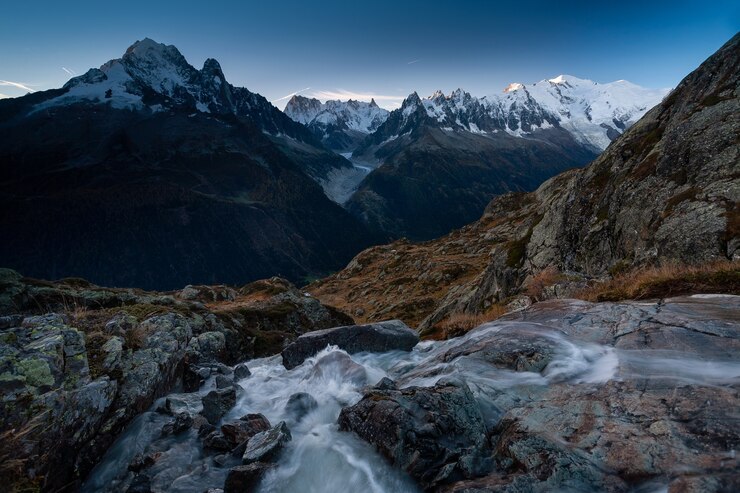
Lhotse also boasts two subsidiary peaks that add to its grandeur: Lhotse Main, or Lhotse Shar and Lhotse Middle. Lhotse Shar is the eastern peak of 8,383 meters (27,503) and Lhotse Middle is often considered as part of the multiple summit system. Altogether, they offer different climbing experience, and that is why mountaineers who intend to achieve the greatest number of peaks pay attention to them.
Lhotse’s importance thus goes beyond the fact that is somewhat higher than the neighboring seven thousand; Lhotse’s ties with Everest, the historical first ascent, and the odds it sets make it a prize of desire for climbers everywhere. The two summits, diverse number of routes and history of the mountain all give it a unique place among the others in the holly Himalayas range.
Top 5 Tallest Mountains in the World
Makalu: The Isolated Giant
Makalu, the fifth highest mountain in the world, stands magnificently at 8,485 meters (27,838 feet) in the Mahal Angur Himalayas, southeast of Mount Everest. Known for its striking pyramid-like structure, Makalu presents a formidable challenge to mountaineers. This remote giant’s steep pitches and knife-edged ridges contribute to the difficulties faced by climbers, making it one of the less frequently ascended 8,000-meter peaks.
The first successful ascent of Makalu took place in 1955, led by a French expedition under the leadership of Jean Franco. This groundbreaking achievement marked a significant milestone in high-altitude mountaineering. The team employed meticulous planning and considerable expertise to overcome the daunting terrain and environmental obstacles. Their success has since inspired numerous climbers to take on the challenge, despite the mountain’s remote and difficult-to-access location. Top 5 Tallest Mountains in the World
Makalu’s unique pyramidal shape is defined by four prominent ridges, each posing its own challenges. The Southeast Ridge, particularly notorious for its sharp, corniced edges, demands high technical proficiency and resilience from climbers. Additionally, the ascent is often complicated by harsh weather conditions and the potential for avalanches, necessitating advanced preparation and caution.
The surrounding environment further accentuates Makalu’s allure and challenges. The mountain is part of the Makalu-Barun Valley, a pristine Himalayan wilderness known for its biodiversity. Home to endangered species like the snow leopard and red panda, this region adds an ecological dimension to the adventure. Climbers and trekkers are often compelled to navigate this delicate ecosystem with mindfulness to preserve its natural beauty.
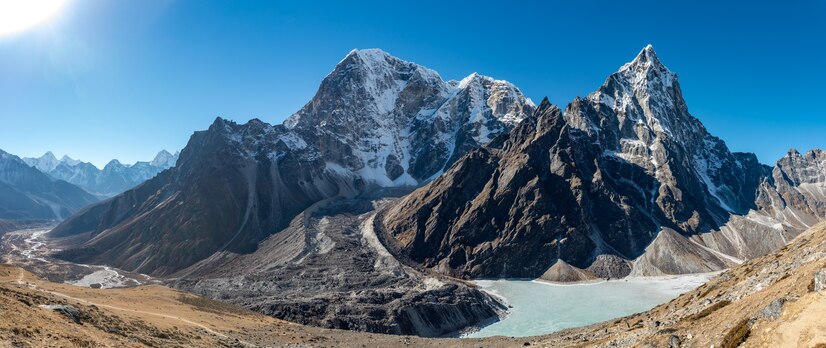
In essence, Makalu’s isolation and the technical demands of its ascent make it a coveted but challenging summit for mountaineers. Its towering presence and the pristine environment surrounding it continue to captivate those who seek both adventure and tranquility in the high Himalayas.
The world’s top five biggest mountains each present a unique set of challenges and characteristics that make them stand out in the mountaineering community. While these mountains share the common trait of towering height, they exhibit distinct differences and similarities that define their individual climbing experiences.
Height and Location
Currently the tallest is Mount Everest that reaches 8,848 meters (29,029 feet) and is found on the border of Nepal and China, in the Hemaya’s mountain range. K2 which is the second tallest mountain in the world with a height of 8,611 meters [28,251ft] is located in the Karakoram range with part of the mountain in China and the other part in Pakistan. Kangchenjunga at 8,586 meters (28,169 feet) is the third tallest mountain located in the border of India and Nepal. Lhotse stands at 8,516m (27,940 ft) and Makalu is slightly lower at 8,485m (27,838 ft); both lie in the Himalayas-Nepal- China region. Top 5 Tallest Mountains in the World
Ascendancy Records and Climbing Difficulty
The rate of success in climbing Mount Everest is higher than the other four with thousands of climbers visiting it every year because it is famous and the ways up it is comparatively easy than K2 which is affected by highly unfavorable weather conditions and technical difficulties in climbing making it the most difficult climb of the five top hills. Kangchenjunga is not as popular as Everest and K2, however it is also rather dangerous mainly for the reasons of avalanches and steep slopes. Though slightly lower in altitude Lhotse and Makalu are equally technical and steep with difficult paths and elevating conditions.
Weather Conditions and Required Climbing Skills
This is an essential aspect of climbing these monumental peaks since the climber cannot control for weather. The unpredictable weather is more marked in the case of Everest although the climbing windows are more predictable in spring and autumn seasons. The weather on K2 is considerably more unstable and often offers only abrupt winds and snowstorms, thus even the experienced climbers face great difficulties.
Kangchenjunga, Lhotse and Makalu are also very aggressive with the kind of weather that a climber has to encounter so the physical and mental skills of survival are very well honed. In terms of technical difficulty these mountains range from relatively safer that can even be climbed with one axe as in the case of Mount Everest to very steep rock and ice that require very good technical ability while climbing as is the case with K2.
Historical Significance
As for Mount Everest, its history can hardly be overestimated as it has been the first peak of the five to be conquered in 1953 by Sir Edmund Hillary and Tenzing Norgay. K2, while visited relatively less often, has an ill repute as the ‘Savage Mountain,’ which was first climbed in 1954 by an Italian expedition. Kangchenjunga being the third tallest mountain in the world has importance in both Nepali as well as in Sikkimese culture. Two peaks particularly have stood out through the number of attempts and final success, Lhotse in 1956 and Makalu in 1955 but still forms part of the unparalleled successes recorded in high altitude climbing history. Top 5 Tallest Mountains in the World
Therefore, as the following five largest mountains, they do share the grandeur of towering summits, but they are different by their geography, the level of the challenge, climate, and history. These factors explain the lure and just the fact that each mountain is a challenge that attracts all mountaineers around the world.

Conclusion: The Majestic Peaks of Our Planet
Thus, having looked at the five largest mountains in the world, it is possible to note that the discussed objects are wonderful examples of the sublime creation of nature. These peaks should be seen as monuments to the awesome geology and the unrelenting power that goes into the making of the earth. Starting with Mount Everest that has the altitude of 8,848m and up to other giants of the planet like K2, Kangchenjunga, Lhotse and Makalu one not only observes their impressive size, but at the same time, certain risks that are associated with it. Top 5 Tallest Mountains in the World
These mountains are not simple geographical dots on the map but the embodiment of the humanity and its never tireless spirit, desire and attempt of exploration. The difficult climbing paths, challenging terrains, and beautiful views make people from all over the world come and challenge themselves by climbing the mountain. Every successful summit is a victory over some of the toughest climate existence can offer and every attempt is a narration of a tale of survival.
As we look at them as great big mountains that they are we also have to take our hats off for making sure appropriate mountaineering practice is done. Such marvels should be protected from harm, enjoyed by generations to come and the tests they offer made available to succeeding generations. However, the achievements in our ability to map these geographical wonders and further our studies on these geographical marvels need to be accompanied by the call for responsible practices for these territories and for awareness on their ecosystems’ importance.
And so, as this discussion comes to a close, let the majestic terminus of the world’s highest mountains offer to our waking thoughts the following proclamation from Psalms 48: 2 ‘‘Beautiful in elevation is the joy of all the earth, the joy of Mount Zion. O God, when You were pleased with Your Name as their Fortress.
They work to recall people’s attention to how differently the Earth is built and how it shapes people’s lives. Whichever way we wish to slice it, whether one is a professional mountaineer or a devoted observer or even a layman who surfs through scientific websites, this roar of these gigantic terminations is a call to know more, to understand more and to value the rare treasures that our Mother Nature has bestowed on our beautiful planet. Top 5 Tallest Mountains in the World

